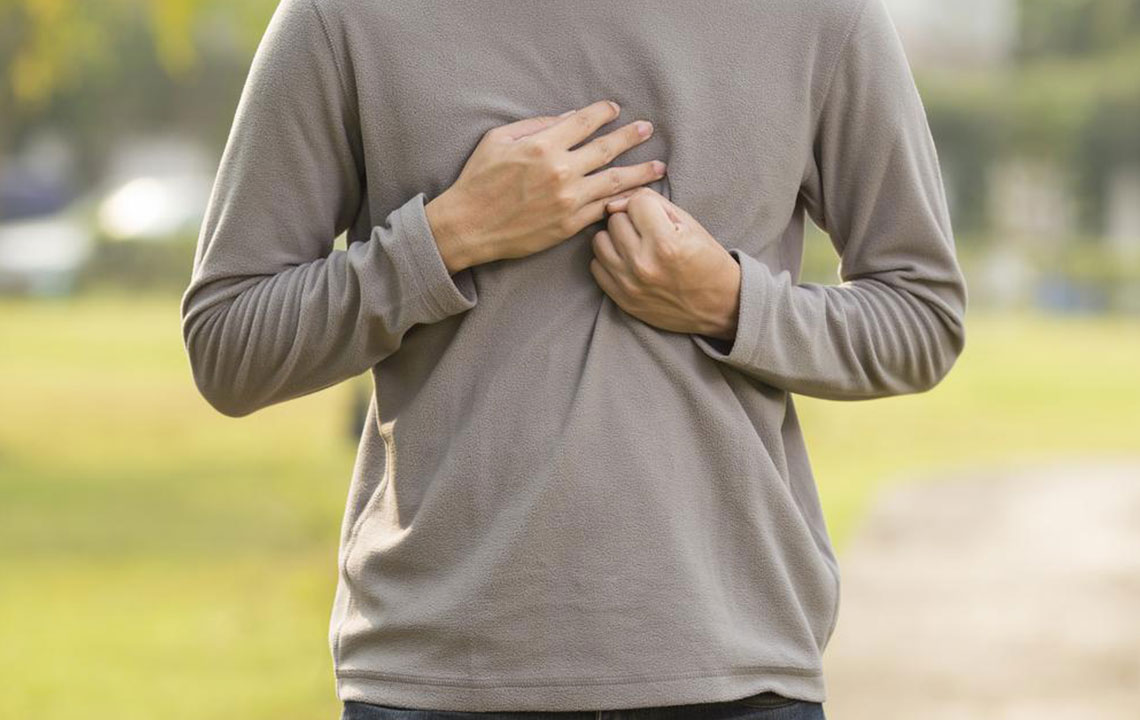Heartburn Chest Pain- How Can You Tell

Heartburn is the burning sensation that you experience in your chest after you eat. This feeling can be intense at times, and in these extreme cases, the person might even experience a chest pain.
Heartburn is a fairly common condition that occurs when there is indigestion, and the food doesn’t sit well with your system. This happens when you eat spicy food or overeat. It is also known as acid reflux as the acid in your stomach comes back up into the esophagus causing a burning sensation in your chest.
You might also feel nauseous and uncomfortable for a long time. If heartburn occurs more than two times a week, you may have gastroesophageal reflux disease. It can lead to further complications if left untreated.
How To Differentiate Heartburn Chest Pain And Heart Attack
One of the main symptoms of heartburn is chest pain. This is the reason most people confuse heartburn with cardiac attacks. The burning in the chest causes alarm and has people assuming that they are experiencing a heart attack.
This is how you can distinguish between the two:
Signs Of A Heart Attack
The chest pain you experience when you have a heart attack will slowly spread to your neck, arms, and shoulders. You will have shortness of breath and feel light-headed. There will also be a lot of sweating. There will be a tightness in the chest, unlike the pain you feel in heartburn.
Signs Of A Heartburn
Patients experiencing a heartburn feel the pain in the chest spreading to the throat. A vomiting sensation and an acrid taste in the tongue are other signs. You’ll feel like the food is coming back into your mouth. Lying down will only intensify the discomfort and pain.
Other signs that tell you that you have a heartburn and not a heart attack is, you will not be sweating, and the pain will occur after you have a meal. Consult a doctor if you are unable to differentiate between the two. The symptoms might appear to be similar when you have a severe heartburn.
Main Reasons Behind The Heartburn
If you have episodes of heartburns more than twice a week, there can have severe consequences for your health. The cause can also be due to an underlying condition. The gastroesophageal reflux disease can happen to people of all ages. The main reason behind it is lifestyle factors.
Here are the leading causes of heartburn:
- One of the main reasons behind heartburn is obesity. Unhealthy food habits can increase the chances of heartburn.
- Smoking and drinking can cause indigestion and lead to acid reflux.
- Spicy foods like garlic, raw onions, and black pepper can cause heartburn.
- Tomatoes and citrus foods are also known to be triggers for heartburn.
- Overeating and having food after bedtime can lead to this condition as well.
- Lack of exercise is one of the causes too.
How Can You Tell When You Have A Heartburn Chest Pain
There are many symptoms of heartburn. If monitored carefully, you can differentiate between a heartburn and chest pain. Here are the main symptoms of heartburn:
Chest Pain
This occurs because the acid splashes into the esophagus. The chest pain lasts longer in severe cases. If there is intense pain, it is best to consult a doctor immediately. It is best to look out for heartburn chest pain as it could even be a symptom of heart attack.
Burns More When You Rest
A classic sign of this condition is that the burnings sensation increases when you lie down. This is because the acid moves further up when you rest. Sitting straight up will keep the food in place, and so the discomfort won’t be as much.
After Meal
Heartburn occurs after a meal in most cases. If you have chest pain and vomiting sensations after having a heavy meal, it is most likely caused by heartburn.
Bitter Taste
The acid travels back into the esophagus and leaves a bitter taste in the mouth. You also have the feeling that the food is coming up.
Those who experience heartburn also have soreness in the throat causing them to cough. The condition also makes swallowing difficult. If you are experiencing the above symptoms, you can be confident that the reason is heartburn.
Best Way To Treat Your Heartburn
Lifestyle plays a vital role in treating heartburn. The first step is to live a healthy life. This includes maintaining a proper body weight and staying away from alcohol and cigarettes. If you are experiencing severe heartburn chest pain, then you can eliminate foods that are known to trigger the condition.
Maintain a routine where you eat on time and exercise regularly. A balanced lifestyle will keep you away from heartburn or any of its symptoms. If the heartburn chest pain is severe, it is best to consult a doctor. Antacids are prescribed to treat heartburns.


